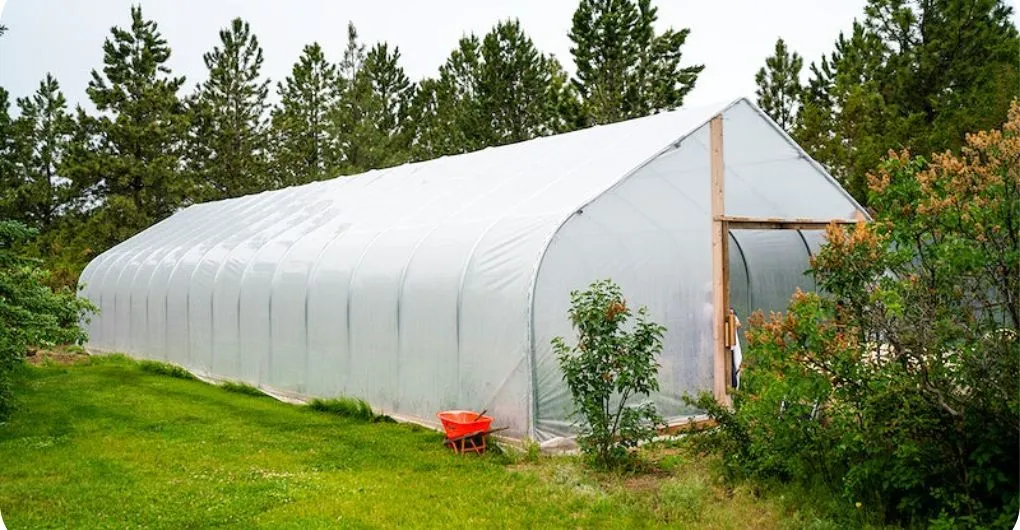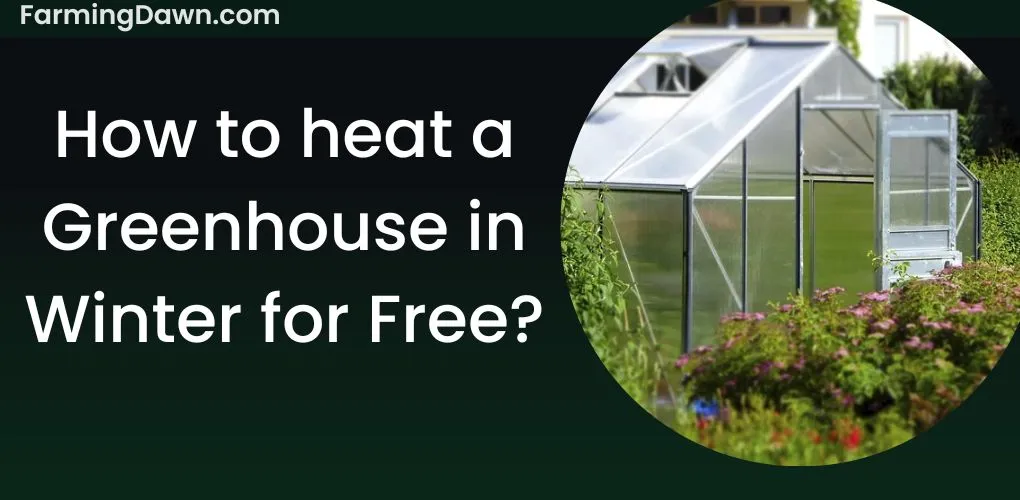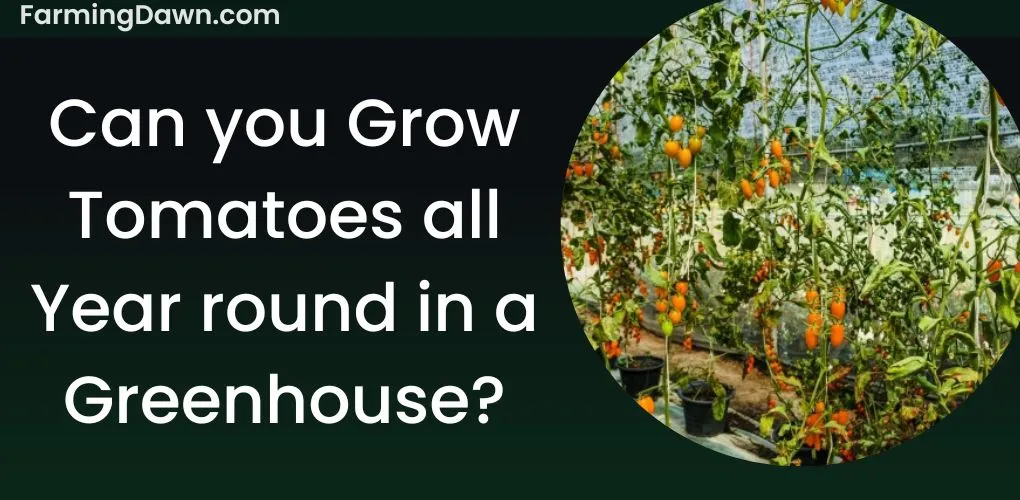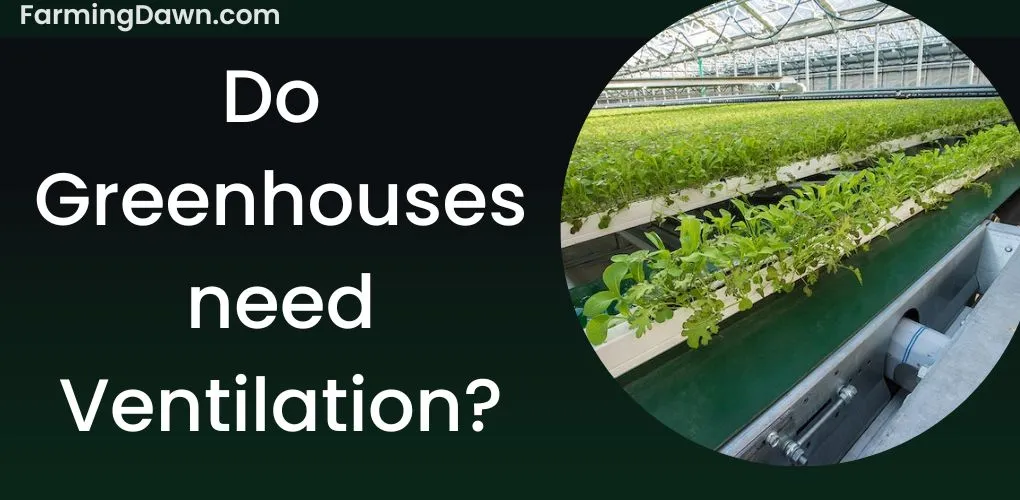Knowing how to heat a greenhouse in winter for free can be a great addition to your gardening book, especially if you own a greenhouse. Having a greenhouse in the winter can provide numerous benefits. You can extend the growing season, and it can also serve as a comfortable haven for you to retreat to during the chilly months.
But let’s face it; winter can be cold and merciless even with a greenhouse. To guarantee that your plants survive the cooler weather and continue to thrive, adequate heating is necessary.
In this post, I will look at inexpensive and energy-efficient ways to heat a greenhouse for nothing during the winter. By utilizing the force of nature and some cunning strategies, you may make a cozy and welcoming environment for your plants to develop and thrive.
How to Heat a Greenhouse in Winter for Free using Different Methods?
This guide will tell you how to heat a greenhouse in winter for free using 8 different cost effective ways. The techniques include Positioning the greenhouse, Compost Heating, Thermal mass heating, Ground to air heating, Wood/biomass Heating, Heat greenhouse with candles, Utilizing recycled materials, Livestock Heating. Let’s discuss them one by one.
Positioning the greenhouse
Positioning the greenhouse for maximum sunlight and using insulation to retain heat are two natural methods often overlooked. You can take advantage of the Sun’s inherent warmth to keep your greenhouse warm by placing your greenhouse where it gets the most sunlight throughout the day.
It can also make a significant impact to utilize insulation to maintain the heat inside the greenhouse.
Compost Heating
Using compost as a heat source is an additional free greenhouse heating technique. By putting a layer of compost underneath your greenhouse, you can make use of the heat that compost produces as it breaks down to keep your plants warm. This is a fantastic method to utilize your compost and give your plants the desired warmth.
Thermal mass heating
Thermal mass heating is another efficient greenhouse heating technique. You may control the temperature inside your greenhouse by using objects like water or rocks that collect heat during the day and release it at night. This is a fantastic approach to guarantee that the atmosphere in which your plants grow is stable.
Ground to Air Heating
This technique includes circulating warm air into your greenhouse using pipes that are buried underneath. This is an extremely effective method of heating your greenhouse and can be run on clean energy. Speaking of which, if you want to heat your greenhouse without using fossil fuels, renewable electricity heating is a fantastic alternative.
Wood/biomass Heating
Another method that can be quite efficient if you have access to a supply of wood or other biomass materials is wood-fired/biomass heating. This is an excellent and potentially extremely cost-effective approach to heating your greenhouse using a sustainable resource.
Heat greenhouse with candles
Candles are needed in large quantities to heat a greenhouse adequately. Be sure to buy candles designed exclusively for use in greenhouses. They normally come in bulk and have no drips, smoke, or odor. Make sure the candles are spaced properly prior to putting them inside the greenhouse.
Keep children away from any structures or items that could catch fire. Check the temperature regularly to ensure it is not becoming very hot or cold. To keep the temperature consistent, adjust the number of candles as necessary.
Utilizing recycled materials
How to heat a greenhouse in winter for free by using recycled material? You can keep your greenhouse warm and cozy without paying a dollar by recycling items like old windows, plastic bottles and jugs, or bubble wrap. This strategy is not only eco-friendly but also a fantastic technique to lessen your carbon impact.
Livestock Heating
Heating with cattle is a last technique that has been employed for ages. You can use the body heat of animals in your greenhouse, such as chickens or rabbits, to keep your plants warm. This is a fantastic approach to combine two ecological practices while keeping your greenhouse warm.
Tips for Maximizing Heat Efficiency
Air leaks can be a substantial source of a greenhouse’s heat loss. Ensure that your greenhouse is well-sealed, with no holes or flaws that allow chilly air to infiltrate. Take particular attention to areas near doors, windows, and vents, as these are popular spots for draughts.
Utilize insulation
Insulation can help to retain heat and minimize energy use. Consider insulating the walls, ceiling, and floor of your greenhouse, particularly if you’re in a colder location.
Monitor temperatures
To improve heat efficiency, it’s necessary to keep a close eye on the temperature within your greenhouse. Choose a good thermometer or temperature sensor, and check the temperature often. Modify your heating system as needed to maintain a consistent temperature.
Adjust heating methods
A greenhouse can be heated in a variety of ways, including electric heaters, propane heaters and wood burners. Try several heating systems to find the best one for your greenhouse and climate. Be prepared to modify your heating strategy based on the climate and weather conditions.
The cheapest way to heat a greenhouse in winter
Using passive solar heating methods is the most affordable way to heat a greenhouse throughout the winter. This involves positioning the greenhouse to face the Sun and using thermal mass materials such as bricks, stones or water barrels to absorb and store the Sun’s heat during the day, releasing it at night.
Using insulating materials to retain heat, such as bubble wrap or double-layered plastic, is another economical choice. By employing these methods, greenhouse owners can save money while guaranteeing that their plants survive the winter months.
What temperature do you cover plants?
This can vary based on the precise plants you are cultivating and their temperature requirements. However, most plants like temperatures between 60-75°F (15-24°C) during the day and 55-65°F (13-18°C) at night. Some plants may prefer slightly warmer or cooler conditions, so it’s crucial to research the unique demands of your plants.
How to heat a Plastic Greenhouse for free?
Heating a plastic greenhouse differs from heating a conventional glass or other material greenhouse. Because plastic is such a great insulator, it can effectively hold onto heat. It also implies that it might be challenging to control the greenhouse’s temperature. However, plastic greenhouse is a better choice than polycarbonate greenhouse, because of the certain problem with polycarbonate greenhouse.

Using Sun’s energy
Using the Sun’s energy is one of the finest ways to heat a plastic greenhouse for free. Make sure your greenhouse is situated in a sunny area to maximize this impact, and use clear plastic or polycarbonate panels rather than opaque ones to let more light in.
Using Compost
Using compost is another cost-free method of heating your greenhouse. Did you know that composting can also produce heat? Composting is a great technique for converting kitchen and garden garbage into fertile soil. The organic material creates heat as a consequence of its decomposition.
By putting your compost bin inside the greenhouse, you can utilize this heat to warm up the space. Your plants will benefit from the warmth produced by the composting process, which will keep them warm.
Using animal manure
Animal dung can also be used to heat your greenhouse. Perhaps not the most pleasurable option, but this method can be incredibly powerful. You can make a slurry by combining manure and water, then circulating it within your greenhouse through a network of pipes or tubing.
The slurry will release heat as it decomposes, warming your greenhouse.
How to heat a greenhouse with water
Finally, you can heat your greenhouse with water. Because of its good thermal mass, water can absorb and hold onto heat. You can put water barrels inside your greenhouse and let them soak up the heat all day. The water will release the heat at night when it gets colder, keeping your greenhouse warm.
Do greenhouses need to be heated in the winter?
That depends on a couple of different things. If your greenhouse is well-insulated and you reside in an area with mild winters, you might not even need to heat it. However, if you reside somewhere with harsh winters, you might need to offer some heat to prevent your plants from freezing.
Several heating options are available, including gas heaters, wood fires, and even compost warmers. The secret is to keep an eye on the temperature inside the greenhouse and change your heating system as necessary.
Can you grow plants year-round in a greenhouse?
Absolutely! One of the perks of a greenhouse is that it allows you to extend your growing season and even grow plants year-round in greenhouse in some situations. Of course, you’ll need to choose plants suited for the season and the climate within your greenhouse.
You may also need to change your planting schedule and lighting to account for the changing seasons. With some forethought and care, you can keep your greenhouse full of attractive and healthy plants all year long.
How to heat a greenhouse in winter for free? Conclusion
Congratulations! You’ve just learned how to heat a greenhouse in winter for free without spending a penny on heating bills. By implementing these eco-friendly and cost-effective methods, you can keep your plants warm and healthy without compromising the ecosystem or your hard-earned money.
Whether you choose Thermal mass, compost heating, Ground to air heating or other natural heat sources, you can enjoy a thriving greenhouse all year round. I sincerely hope this guide was useful and informative. If you have any remarks or inquiries, please don’t hesitate to ask me in the comments. Thank you!






